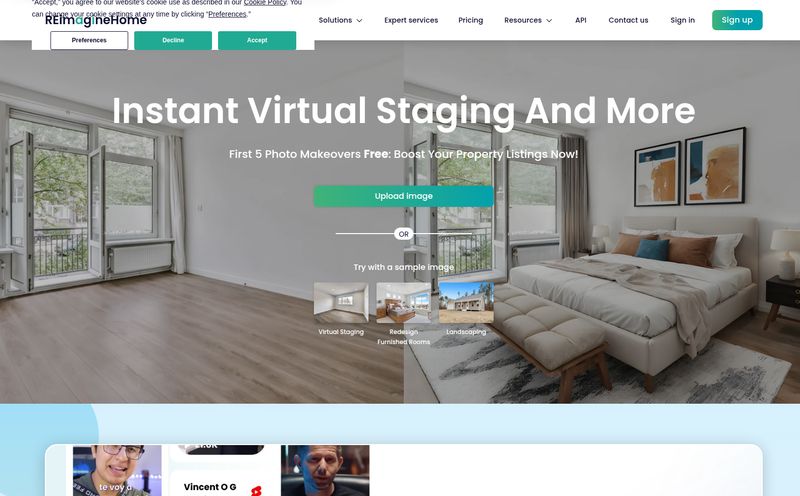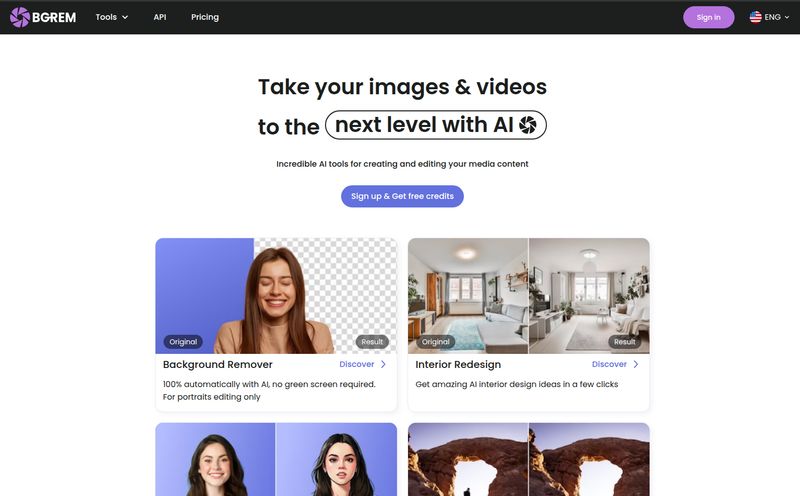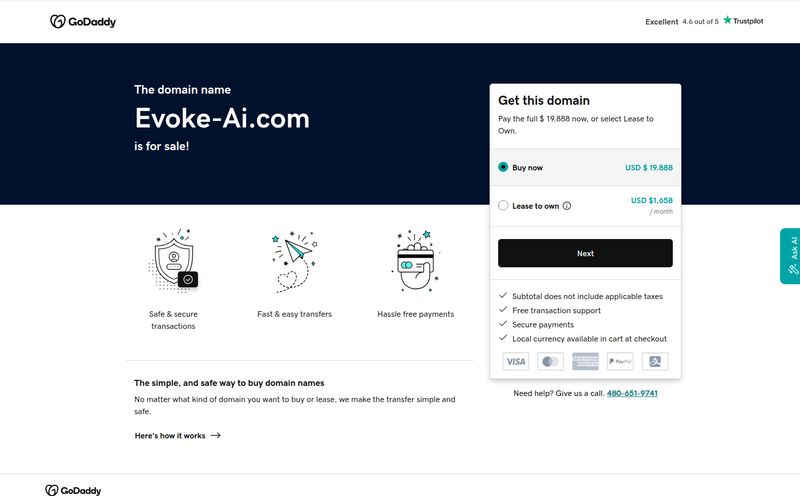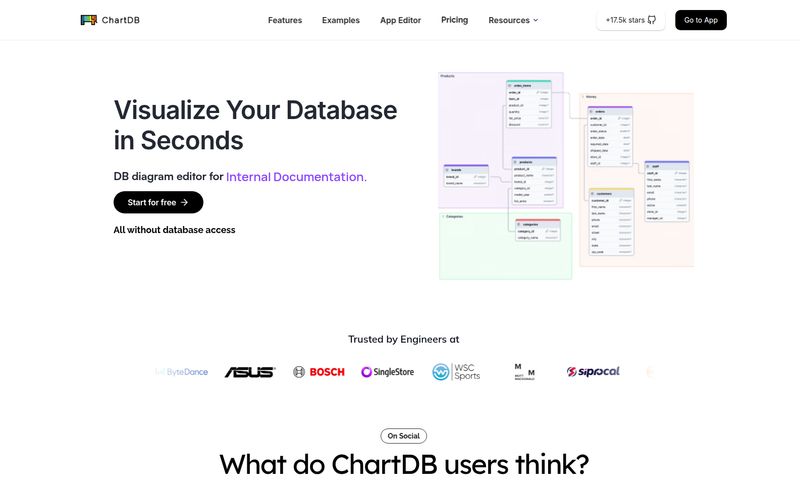If you're a homeowner, a renter, or just someone with a Pinterest account, you've been there. You're staring at a room in your house—the sad, beige living room, maybe?—and you know it has potential. You can feel it. So you dive headfirst into the internet, a swirling vortex of inspiration boards, blogs, and endless furniture store websites. Hours later, you emerge, blinking, with 57 open tabs and even less clarity than when you started. The dream has become a chore.
This is the exact problem that a wave of new AI tools promised to solve. And one of them, AI Interior Studio, caught my eye a while back. The pitch was perfect: an AI-powered designer that could take a single photo of your space and transform it into a stunning, fully-realized room. Even better, it would give you shoppable links for the products. A dream, right?
Well, about that. It's a bit of a ghost story. If you try to visit their old home at aiinteriordesign.io today, you won’t find a futuristic design tool. You'll find a GoDaddy landing page telling you the domain is for sale. Oof. So what was this tool, and what does its disappearance tell us about the wild, wild west of AI startups?
What Was AI Interior Studio Supposed to Be?
Before it became a digital phantom, AI Interior Studio was marketed as your personal AI shopper and designer, all rolled into one. Think of it like Shazam, but for interior design. Instead of identifying a song, it would identify a vibe from your photo and then build a whole room around it.
The core idea was beautifully simple. You'd snap a picture of the room you wanted to redecorate—even a completely empty one—upload it, and the AI would work its magic. It would generate fresh design concepts, from modern minimalist to cozy bohemian, filling the space with furniture, decor, and color palettes that actually worked together. It wasn't just a mood board; it was a virtual staging of your actual room.
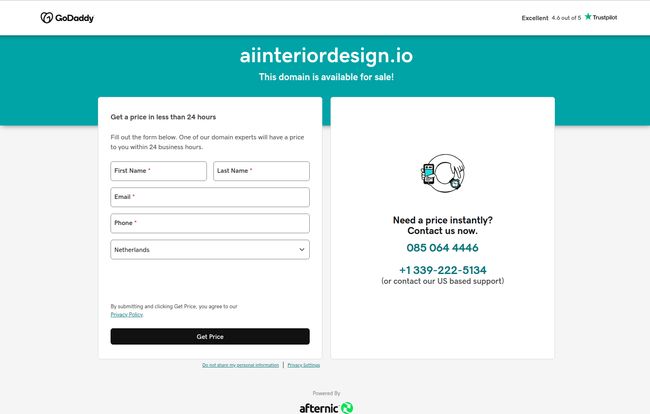
Visit AI Interior Studio
The Features That Had Us Hooked
It wasn't just a concept; the feature list was what made it so compelling. This wasn't just another photo filter; it was designed to be a genuinely useful tool for anyone stuck in a design rut.
From Photo to Furniture: The Core AI Magic
The main event was, of course, the AI generation. It could supposedly understand the architecture of your room—the windows, the doors, the odd corners—and then intelligently place furniture. This is the holy grail for so many of us who struggle with visualizing scale and layout. Does that sofa actually fit on that wall? The AI was meant to figure that out for you.
The "Shop the Look" Revolution
This was the killer feature, in my opinion. Getting a pretty picture from an AI is one thing. Midjourney can do that all day long. But AI Interior Studio promised to connect that inspiration directly to commerce. It would identify the items in the generated design—that cool floor lamp, the art deco rug, the perfect armchair—and provide you with links to buy them from real retailers. This closes the gap between dreaming and doing, which is where most redecorating projects fall apart.
Not Just for the US: Global Decor Dreams
Another really thoughtful feature was the country-specific product availability. There is nothing more frustrating than falling in love with a piece of furniture online only to find out it doesn't ship to your country, or the shipping costs more than the item itself. By tailoring shoppable links to your location, the tool aimed to avoid that heartbreak. A small detail, but one that shows a real understanding of the user experience.
The Good, The Bad, and The AI-Generated Ugly
Like any tool, especially an AI one, it wasn’t all sunshine and perfectly placed throw pillows. Based on its description and how these tools generally work, you can piece together the likely pros and cons.
On the bright side, the time-saving potential is massive. It cuts out the endless guesswork. For folks in real estate, the value is obvious. Imagine being a realtor with an empty property; you could generate stunning, virtually staged photos in minutes to help buyers see the potential. That could genuinely boost a property's value and sell-time.
But there were some clear potential pitfalls. For one, the quality of the output would be heavily dependent on the quality of the input photo. You know the old saying in data science: garbage in, garbage out. A blurry, poorly-lit photo from your old phone probably wouldn't yield great results. There's also the ongoing debate in the creative community about whether AI like this truly inspires or just homogenizes design. If everyone is using the same algorithms, will all our living rooms start to look the same? It’s a valid question.
So, What About the Price? The $1 Mystery
The pricing information we have is a tantalizing clue in this mystery. AI Interior Studio had a "Product Hunt Launch Special" offering your first design for just $1. This is classic startup strategy. Launch on a platform like Product Hunt, get a flood of initial users with a super low introductory price, and hopefully build enough momentum to take off.
This tells me they were in the early, scrappy stages. They were trying to prove their concept and build a user base. Unfortunately, it seems the momentum just wasn't enough. A $1 price point is great for users but tough for building a sustainable business, especialy with the high costs of running powerful AI models.
The Elephant in the Room: Where Did aiinteriordesign.io Go?
This brings us back to the main question. What happened? In the fast-paced world of AI SaaS, this story isn't unique. A promising tool appears, generates some buzz, and then quietly fades away. There are a few likely scenarios:
- They Ran Out of Runway: The most common story. The startup burned through its initial funding and couldn't secure more before revenue became self-sustaining.
- An Acqui-hire: A larger company (maybe a furniture retailer or a big tech firm) might have bought the company not for the product, but for the talented team behind it.
- A Pivot: They might have realized the direct-to-consumer model wasn't working and pivoted to a B2B product under a new name, maybe selling their tech to real estate companies directly.
- It Was Just a Project: Sometimes these tools are built as impressive portfolio projects or experiments and were never intended to be long-term businesses.
Whatever the reason, it's a stark reminder of the volatility in this space. As a TechCrunch article rightly pointed out, hype doesn't always translate to longevity. For every success story, there are dozens of digital ghosts like AI Interior Studio.
Are There Alternatives to the Ghost of AI Interior Studio?
Don't despair! If you landed here looking for an AI to help with your home, the dream is not dead. The idea behind AI Interior Studio was a good one, and other platforms are running with it. Here are a few you can check out right now:
Planner 5D: A more established player in the space. It’s a comprehensive design tool that lets you create detailed 2D and 3D floor plans and decorate them with a huge catalog of items. It has some AI features baked in as well.
Homestyler: Another powerful tool, originally from the creators of AutoCAD and 3ds Max. It's very popular among aspiring designers and allows for photorealistic renders of your designs.
Midjourney/DALL-E 3: If you just want pure, untamed inspiration without the constraint of your actual room, these generative art AIs are incredible. You won't get shoppable links, but you'll get ideas you never would have imagined on your own. Just prompt something like, "A sun-drenched living room in the style of Japanese brutalism with a pop of orange" and see what happens.
Final Thoughts on a Promising, Vanished Tool
AI Interior Studio feels like a glimpse of the future that arrived a little too early, or perhaps just without the right business model. The concept is brilliant and solves a real, frustrating problem for millions of people. Connecting AI-generated designs to shoppable products is the missing link that makes these tools truly practical.
While this particular domain may be up for sale, the idea is here to stay. We'll see more refined, more sustainable versions of this in the coming years. For now, the story of AI Interior Studio is a fascinating case study and a reminder to be a little bit critical when we see the next big thing. Sometimes, they're just passing through.
Frequently Asked Questions (FAQs)
- What was AI Interior Studio?
- AI Interior Studio was an AI-powered platform designed to generate interior design ideas from a single photo of a room. Its key feature was providing shoppable links for the furniture and decor used in its AI-generated designs.
- Why can't I access aiinteriordesign.io?
- The domain
aiinteriordesign.iois currently listed for sale, which means the original project is no longer active at that address. The company may have ceased operations, been acquired, or rebranded under a new name. - How much did AI Interior Studio cost?
- Information suggests it had a limited-time launch offer on Product Hunt where users could generate their first design for only $1. This indicates it was in its early startup phase.
- Can AI really design a room?
- Yes, to an extent. AI is excellent at generating aesthetically pleasing concepts, suggesting layouts, and creating color palettes based on vast amounts of data. However, it may lack the personal touch, nuance, and practical understanding of a human interior designer.
- What are some good AI interior design tools I can use today?
- While AI Interior Studio is gone, you can try established tools like Planner 5D and Homestyler for comprehensive design, or use generative AIs like Midjourney for pure visual inspiration.
Reference and Sources
- Product Hunt - Platform for discovering new products.
- TechCrunch - On the volatility of AI startups.
- Planner 5D - Alternative home design software.
- Homestyler - Alternative interior design application.
